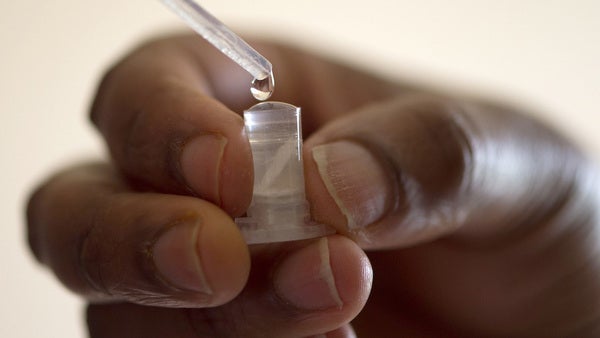New Paper on Racial Residential Segregation, Early Childhood Lead Exposure, and Reading Scores in the Proceedings of the National Academy of Sciences
top text

Our new paper on environmental justice and structural racism has been published in the Proceedings of the National Academy of Sciences (PNAS). In it, we show that the negative effects of lead exposure are compounded for children who live in segregated neighborhoods. This combined effect is particularly acute for Black children. We must do more to protect all children. Read the full story below:
A new analysis quantitatively links an issue of environmental justice — childhood lead exposure — with structural racism in the form of residential segregation. The study shows that lead exposure is associated with lower test scores among all children. Further, non-Hispanic Black children are more likely to be exposed to lead and more likely to live in racially segregated neighborhoods, which amplifies the negative effects of lead exposure.
The research, published in the PNAS, was a collaboration among the Global Health Institute at Duke University, Rice University, and the Children’s Environmental Health Initiative (CEHI) at the University of Notre Dame. The researchers sought to investigate whether and to what degree early childhood educational outcomes are affected by childhood lead exposure and whether racial residential segregation has a compounding effect.
According to the Centers for Disease Control and Prevention, the primary sources of lead exposure among children in the United States are found within their own homes. Homes built prior to 1978 are more likely to have lead-based paint, lead-contaminated dust, and pipes and plumbing fixtures containing lead. Neighborhoods that are racially segregated and/or in low-socioeconomic areas tend to have higher proportions of homes built before 1978. Importantly, there is no safe level of lead exposure, and childhood lead poisoning is preventable.
bottom text

“Our study concluded that it’s not just about where lead exposure is highest — that’s just one piece of the puzzle,” said Mercedes Bravo, assistant research professor at the Global Health Institute at Duke University and a faculty affiliate of Notre Dame’s CEHI. “Black children are more likely to be exposed to lead and are also more likely to live in racially segregated, predominantly Black neighborhoods. When these two exposures co-occur, children had worse-than-expected scores. Identifying these combinations of environmental, social and economic exposures, and interactions between them can inform the targeting and design of interventions in vulnerable communities.”
After controlling for a number of variables, the research team linked 25,699 North Carolina birth records to blood lead surveillance data and educational test scores. The research team assigned geographic locations based on census tract-level data to create a unique population-based dataset that links the information across time and geography.
“In the midst of our country’s racial reckoning, we must work harder to understand and ultimately act on the deep effects that environmental justice and structural racism have on our country and our communities. This paper tackles both issues head-on by showing that a clear issue of environmental justice (childhood lead exposure) is further compounded by the structural racism that Black families in particular face in the United States, as demonstrated through racial residential segregation,” said Marie Lynn Miranda, director of the CEHI and professor of applied and computational mathematics and statistics at the University of Notre Dame.
CEHI has a long history of working on childhood lead exposure. Its tax parcel-level models of lead exposure risk have helped dozens of health departments across the country improve lead screening practices. In addition, CEHI’s work linking lead exposure and performance on standardized tests contributed to the CDC’s decision to lower the reference level for childhood blood lead levels, which helped to protect hundreds of thousands of children across the United States.
CEHI’s work also contributed to the U.S. Environmental Protection Agency’s Integrated Science Assessment of airborne lead exposure. In addition, CEHI’s work identified exposure to aviation gasoline, which is used by piston-driven aircraft, as a source of childhood lead exposure — work that led directly to the U.S. Congress calling for a consensus study report by the National Academies of Sciences, Engineering and Medicine on aviation gas, which was published in 2021 (Miranda served on the committee responsible for writing that report). This work also contributed to the EPA’s decision to issue a proposed endangerment finding for piston-driven aircraft that use leaded fuel.
“This latest work highlights the enduring legacy of lead alongside the enduring legacy of racial segregation in the United States,” Miranda said. “It required building trusting relationships with data stewards and implementing innovative statistical analysis — all in service to those most vulnerable in our communities. The PNAS paper illustrates the importance and social impact of long-term and sustained research programs.”
In addition to Bravo and Miranda, the research team includes Dominique Zephyr, Children’s Environmental Health Initiative, University of Notre Dame, and Daniel Kowal and Katherine Ensor, Department of Statistics, Rice University. This research is supported by the National Institute on Minority Health and Health Disparities and the National Institute of Environmental Health Sciences, both part of the National Institutes of Health.